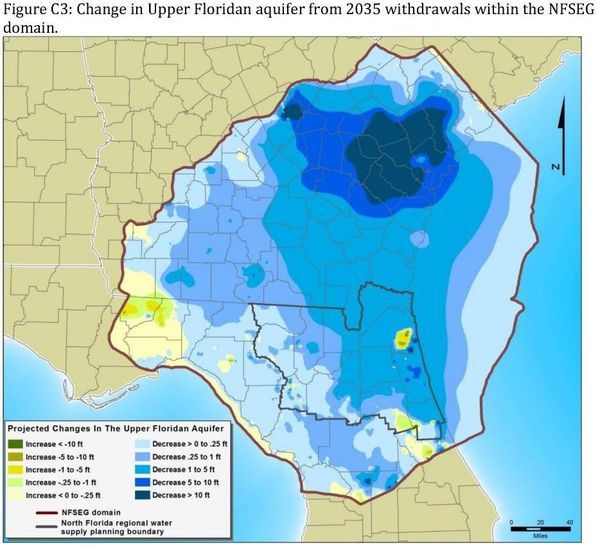Waterkeepers Florida, representing all fourteen Waterkeepers of Florida,
wrote to U.S. EPA and FDEP yesterday objecting to FDEP’s plan to
take over water permitting from the Army Corps of Engineers.
FDEP hasn’t even kept up with the responsibilities it has,
and is in no way prepared to take on a much heavier load.
Suwannee Riverkeeper voted for this letter, which was also signed by
many other organizations, including OSFR and Paddle Florida.
Please vote today for people who will support clean water.
![[Opposition and Addendum Letters]](https://www.wwals.net/pictures/2020-11-02--wkfl-epa-fdep-404-assumption/letters.jpg)
Opposition and Addendum Letters
The Florida Department of Environmental Protection (FDEP)’s list of waterways it plans to assume (see FDEP’s Appendix A) omits
numerous navigable waterways previously listed by the U.S. Army Corps of Engineers.
Checking all the Florida rivers that empty into the Gulf of Mexico,
I found that most of them were included by FDEP, except not
the Suwannee River or its tributaries (many creeks, Lake Santa Fe, and the Santa Fe, New, Ichetucknee, Alapaha, Alapahoochee, and Withlacoochee (north) Rivers),
not the Withlacoochee (south) River nor its tributaries such as the Rainbow River,
and not the Ochlockonee River nor its tributaries, such as Lake Talquin.
I added 30 Suwannee River Basin waterways and 24 others to the Waterkeepers Florida list of missing waterways, which is the main subject of the
Addendum letter (see
PDF).
The Addendum also contains copies of several letters previously sent to FDEP:
an opposition letter similar to the one to EPA,
a request for Public Hearings,
and a request that online rulemaking hearings be discontinued until the pandemic allows holding them in person.
Here is a transcription of the letter to EPA.
See also the PDF.
Don’t forget to vote for clean water. Continue reading →
![[Plastic Free: WWALS, Suwannee Riverkeeper]](https://www.wwals.net/pictures/2020-12-08--plastic-free/many.jpg)

![[Jennings Defeat Rapids, Ogeechee Gum, GS&F RR trestle below CR 150]](https://www.wwals.net/pictures/2020-08-26--jennings-defeat/many.jpg)
![[Map and Proposal]](https://www.wwals.net/pictures/2016-11-14--djprice-nfrwsp-recharge/many.jpg)
![[Manatee under boat, 14:07:12, 29.9327060, -82.8000880]](https://www.wwals.net/pictures/2020-01-20--ichetucknee-santa-fe-pictures/20200120_140712.jpg)
![[2019-04-03 White Sulfur Spring Flowing]](https://www.wwals.net/pictures/2016-12-12--djprice-nfrwsp/2019-04-03--white-sulfur-spring-flowing.jpg)

![[Old Trails]](https://www.wwals.net/pictures/2020-11-02--trail-marker-trees/trails.jpg)
![[1838 Motte Seminole War trail map]](https://www.wwals.net/pictures/2020-11-02--trail-marker-trees/1838-motte-seminole-war-trail-map.jpg)
![[Many locations]](https://www.wwals.net/pictures/2020-11-07--wq/many.jpg)
![[Trailmarker Trees, How To, and old map]](https://www.wwals.net/pictures/2020-11-02--trail-marker-trees/many.jpg)
![[Opposition and Addendum Letters]](https://www.wwals.net/pictures/2020-11-02--wkfl-epa-fdep-404-assumption/letters.jpg)
![[Tannin Times, WWALS monthly newsletter]](https://www.wwals.net/pictures/2020-11-01--tannin-times/tannin-times.jpg)